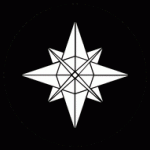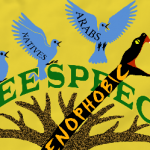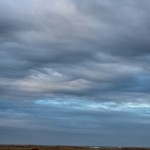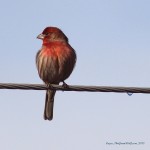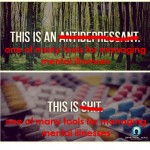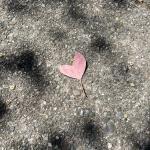In the vast emptiness of space there are an unimaginable number of galaxies, each galaxy containing billions upon billions of stars. Looking at one galaxy we find an average star that hosts eight unassuming planets – four gas orbs, and four rock orbs. But one of these planets is very different. It is suffused with life, and that life is diverse as a result of the different environments this planet holds. Yet, even with all this diversity none of these life forms would exist without the intricate interconnections of a vast network of life-sustaining processes. This larger system is, itself, composed of many smaller networks of life – each local system is a vital part of the whole.
What do you know of your local environment?
Here are 40 questions to evaluate your awareness and literacy of the greater place in which you live:
SKY
1) Point to the nearest Pole (north or south pole).
Answer: The nearest pole can be determined by watching the shadows of a tall object in the open. Marking where it is at daybreak, midday (where the view of the sun is at the highest point in the day), and before nightfall. Where the shadows were during the day is the direction of the nearest pole,with the midday shadow pointing straight in that direction. If within the Tropics (are between the Borealis and Australis Sol Axis) this only works during the shorter days of the year.
This will not work if right on the equator as both poles are the same distance. Or if right on the Australis Sol Axis during Australis Lux (Pecora-Giraffa 1/December 21), or if right on the Borealis Sol Axis during Borealis Lux (Reptilia-Anguis 1/June 21), as the turning view of the sun is directly overhead during these times, only casting shadows in the east-west directions.
2) Name a constellation and find it in the night sky.
Suggestion: Find a star chart or ask a stargazer. Note: It can be a constellation recognized in whichever culture in the world
3) What Star/Constellation can you find in the dark half of the year? The light half of the year?
Suggestion: Find a star chart or ask a stargazer. Note: It can be a constellation recognized in whichever culture in the world
4) What is the current moon phase?
Suggestions: Read up on the moon and take a look outside, or find a lunar calendar
Hint: the moon can sometimes be seen during the day
5) How long until the next lunalux (full moon)?
Suggestions: Read up on the moon and take a look outside, or find a lunar calendar
6) Point to where the horizon crosses the sun at daybreak and nightfall on the equinox/equilux.
Hint: This is due east and due west; Suggestion: Go out during daybreak/revertosol (‘turn to sun’) and nightfall/avertosol (‘turn from sun’) on either equilux or equinox to see
7) Where does the horizon cross the sun on Lux (longest day of year) and Nox (longest night of year)?
Hint: The sun appears closer to the equator of the earth during the shortest days of the year, and appears closer to the poles for the longest days of the year. Within the Tropics it is a matter of the turning view of the sun being either on the other side of the equator or the same side as you’re on. Suggestion: Go out during daybreak/revertosol (‘turn to sun’) and nightfall/avertosol (‘turn from sun’) on Lux & Nox to see
8) Today, where does the west horizon cross the sun at nightfall in relation to due west?
Hint: It shifts north-west and south-west at different times of year
9) From what direction do storms generally come?
Suggestion: Keep an eye to the sky
10) What is the region’s average rainfall?
Suggestion: Find a mean total precipitation map or The Weather Network Statistics for your area
EARTH
11) Is the soil under your feet, more clay, sand, rock or silt?
[answer]
12) Where is the nearest earthquake fault? When did it last move?
Suggestion: Talk to local geologist or find geology map
13) How high above sea level are you?
Suggestion: Find a topographic map
14) What water body or water course does your runoff feed into?
Suggestion: Go out and follow the flow
15) What is your local watershed?
Suggestion: use a topographic map. [Wikipedia, Watershed]
16) Where is the nearest watershed outside of your local one?
Suggestion: use a topographic map. [Wikipedia, Watershed]
17) If you live near the ocean, when is the next high tide?
Suggestions: Talk to local fishermen and enjoy more frequent walks on the coast
18) What is your ecosystem type?
Suggestions: Find a ecosystem map of your area or talk to a biologist
19) How long is the growing season in your area (from frost to frost)?
Suggestion: Find a hardiness zone map, or a gardener
20) Name seven common trees in your area.
Suggestion: Find a Field Guide for your area and/or a gardener
21) What spring wildflower is consistently among the first to bloom where you are?
Suggestion: Find a Field Guide for your area and/or a gardener
22) Name five native edible plants in your region and the season(s) they are available.
Suggestion: Find an Edible Plants Field Guide, or a gardener
23) Name five birds that live where you are. Which are migratory and which stay put?
Suggestion: Find a birding book or a birder
24) What other cities or landscape features on the planet share your latitude?
Suggestion: Find an Atlas
25) Name a place on a different continent that has similar sunshine/rainfall/wind and temperature patterns to your area.
Suggestion: Find an ecosystem map
26) Name 3 species in your area that are threatened or endangered.
Suggestion: contact your local wildlife agency
HISTORY
27) What primary geological processes or events shaped the land in your area?
Suggestions: Read up on local geology or talk with a local geologist
28) What extinct species once lived in your area (within the last thousand years)?
Suggestion: Read up on extinct species of your continent or talk with a local biologist or ecosystem related agency.
29) Name three wild species that were not found in the area 500 years ago but are now present. Name one exotic species that has appeared in the last 10 years.
Suggestion: Look up a regional or national ecosystem related agency or talk with local biologist
CULTURE & CIVILIZATION
30) How did/do the indigenous people of the area sustain themselves (pre-industrially)?
Suggestion: consult local indigenous people, an archeologist or historian or their books
31) What has been the land use of the area in the past two hundred years?
Suggestion: Talk to local archeologist or look up the local cultural heritage agency
32) Are there any culturally significant geological features in your area?
Suggestion: Talk to local archeologist or look up the local cultural heritage agency
Advice: Ensure continued, or create, community identity to the landscape in so that the land is treated respectfully
33) What valuable minerals can be found in your area?
Suggestion: Talk with local geologist or find a geological map.
Advice: Virtually all metals in current use can be post-consumer, having no need for the majority of mines – buy post consumer metal.
34) What valuable plants are cultivated in your area?
Suggestion: Talk with local farmers.
Advice: Practice Permaculture – creating a self-sustaining food forest that supplies all your needs
35) Trace the water you drink from rainfall to your tap.
Suggestion: If not in remote location ask your municipality.
Advice: Source your water from Roof Runoff (rainwater harvesting)
36) Where does your electric power come from and how is it generated?
Suggestion: Read up on or talk with your electrical provider.
Advice: Develop lifestyle that doesn’t require electricity (passive design)
where what is left that does need electricity are luxury items that can self power (small solar panel/gravity) Essentially leaving only the computer and lights for night, everything else can be passive (air conditioning, fridge, cooking, heating, light, water, etc.)
37) When you flush, where do the solids go? What happens to the waste water?
Suggestion: If not in remote location ask your municipality.
Advice: Prevent wasting resources , preserve water and create valuable soil by going with composting toilets
38) What happens to the items you recycle from your neighborhood?
Suggestion: Ask your municipality
Advice: Go plastic free as all plastics end up as toxic waste
39) Where is the closest source of significant pollution?
Suggestion: Take a look at your local industries, agriculture and transportation in area.
Advice: Advocate for pollution free options in your area.
40) Where does your garbage go?
Suggestion: If not in remote location, ask your municipality.
Advice: Create a zero-waste lifestyle where all “waste” is instead a “by-product” that can be reused as compost or recycled resource (Regenerative Design)
If you liked this quiz, you may also like the questionnaire
available on Worldview Connections


